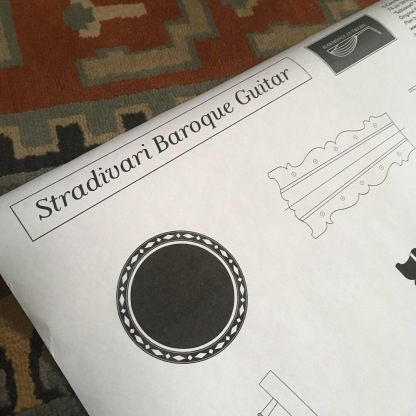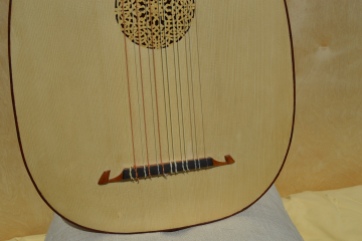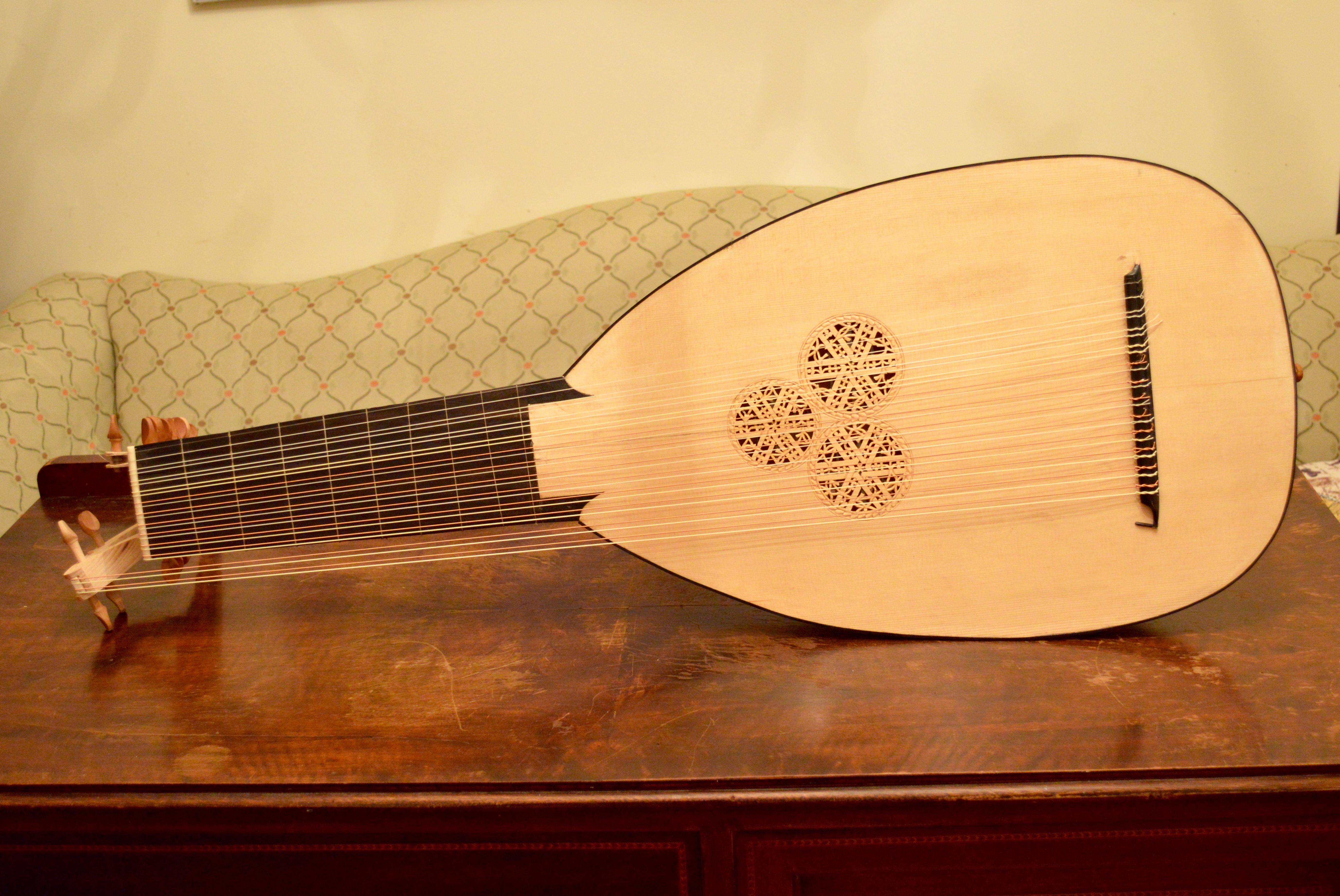Adding veneer to a pegbox can really add visual appeal to an instrument. A lot of planning and time is needed for the finished product to turn out well. By the time you are at the point of veneering the pegbox, you should already have the neck veneer with the same pattern all finished up and ready to continue into the pegbox. If your lines aren’t straight, they will not line up to the end of the pegbox correctly. You also must accommodate for matching up the neck pattern to the pegbox and follow the lines exactly.
This example is from an 11-course lute I am finishing up. The neck veneer is ebony and snakewood with small holly highlights around the major lines. I am very happy with the design and I think it adds an elegance to the instrument that makes it worth all the time and work invested.









































 Here is a sound sample of the 13 course baroque lute.
Here is a sound sample of the 13 course baroque lute.









